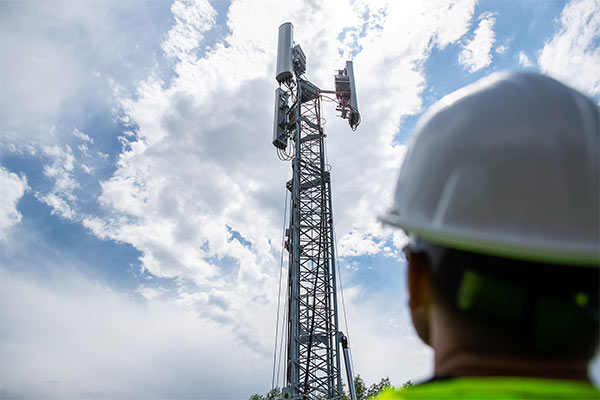DISH Wireless EVP Eben Albertyn on lessons learned from building and operating a cloud native 5G Standalone Open RAN network
After more than a decade of strategic spectrum acquisition, and given the regulatory go-ahead related to the T-Mobile US acquisition of Sprint, DISH Wireless has built out a 5G Standalone network that covers 70% of the US population and provides extensive VoNR service. Following cloud-native and Open RAN principles, DISH Wireless worked with multiple infrastructure and software vendors, serving as its own primary system integrator, to build out the network largely during the COVID-19 pandemic. In the recent Telco Cloud and Edge Forum, available on demand here, DISH Wireless Executive Vice President and Chief Technology Officer Eben Albertyn discussed lessons learned from this process, and shared advice with others in the telecoms ecosystem about how to do cloud native.
While the four takeaways delineated here focus on systems integration, the primacy of silicon, effective ecosystem development, and software development expertise, a cross-cutting theme in his commentary—and in many other discussions hosted during the forum—was the workforce and organizational changes necessary to depart from legacy ways of doing business and taking full advantage of the technology assets in place.
Subscribe now to get the daily newsletter from RCR Wireless News
Editor’s note: These comments are extracted from a longer interview which we’ll further cover soon, and are lightly edited for length and clarity.
- “Embrace wholeheartedly the challenge of being that end-to-end systems integrator, having to understand all the tech almost better than the partners that bring that tech and not standing back from the challenge of what it will mean to integrate, connect, manage, run, orchestrate, whatever you want to call it…Day one, embrace that, stop lying to ourselves, stop trying to make up all kinds of excuses as to why this is not the role of a classical telco. Just really embrace it and get on with it.”
- “Leverage silicon…chipsets and architecture. So we’ve designed the networks so that common data repositories is intrinsically inside of everything that we do. And it’s all common because we want the ability for AI to be intrinsically used in any part of the network…Start using that capability—the silicon and the architecture—the power that unleashes. Start to use that sooner.”
- “Manage that ecosystem. As an example, one of the really big things we had to do was drive and drive and drive and drive and push standards for Open RAN, be part of forums like CAMARA and other places, and really push to get things practically done and get things really standardized and locked down so we can move forward. And I think sometimes we acted a little bit like a passenger on that train. The reality is if you’re going to make things happen, you need to really take ownership and start managing that ecosystem and start really participating in that ecosystem. That doesn’t mean dictating to everybody. It means really participating and really working with people on that.”
- “Software development expertise and how that relates to network in the cloud and embracing those worlds like they are one, because they’ve become one. So not being allergic to new technologies or network-as-a-code or routing as software or embracing things as they become available and being clear on the objectives that you’re trying to reach and then using any and all technological means at your disposable to be able to address those. It’s a culture of not having some religious conviction around some piece of technology being sacrosanct and therefore we’re not going to use it or we’re not going to part ways with it. It’s about the end objective, which is building a great network for our customers.”
